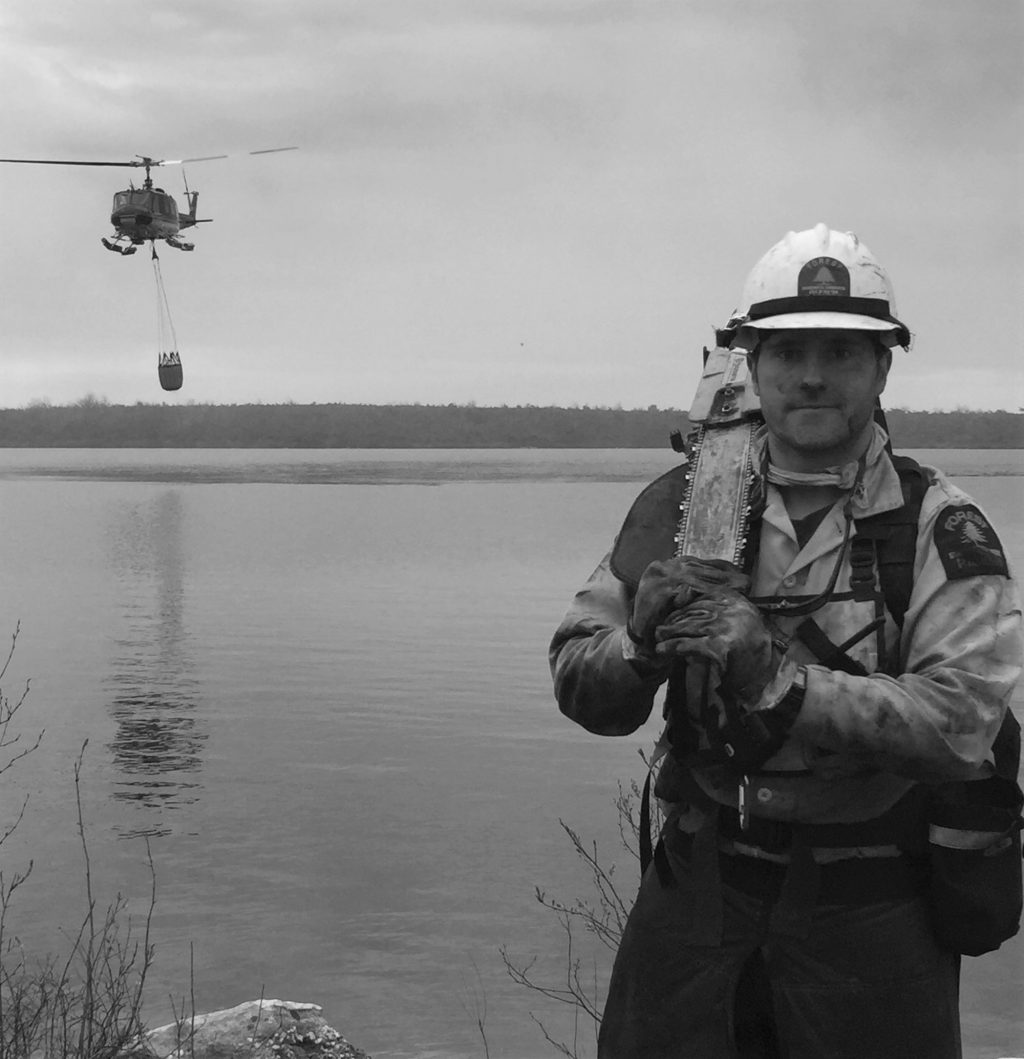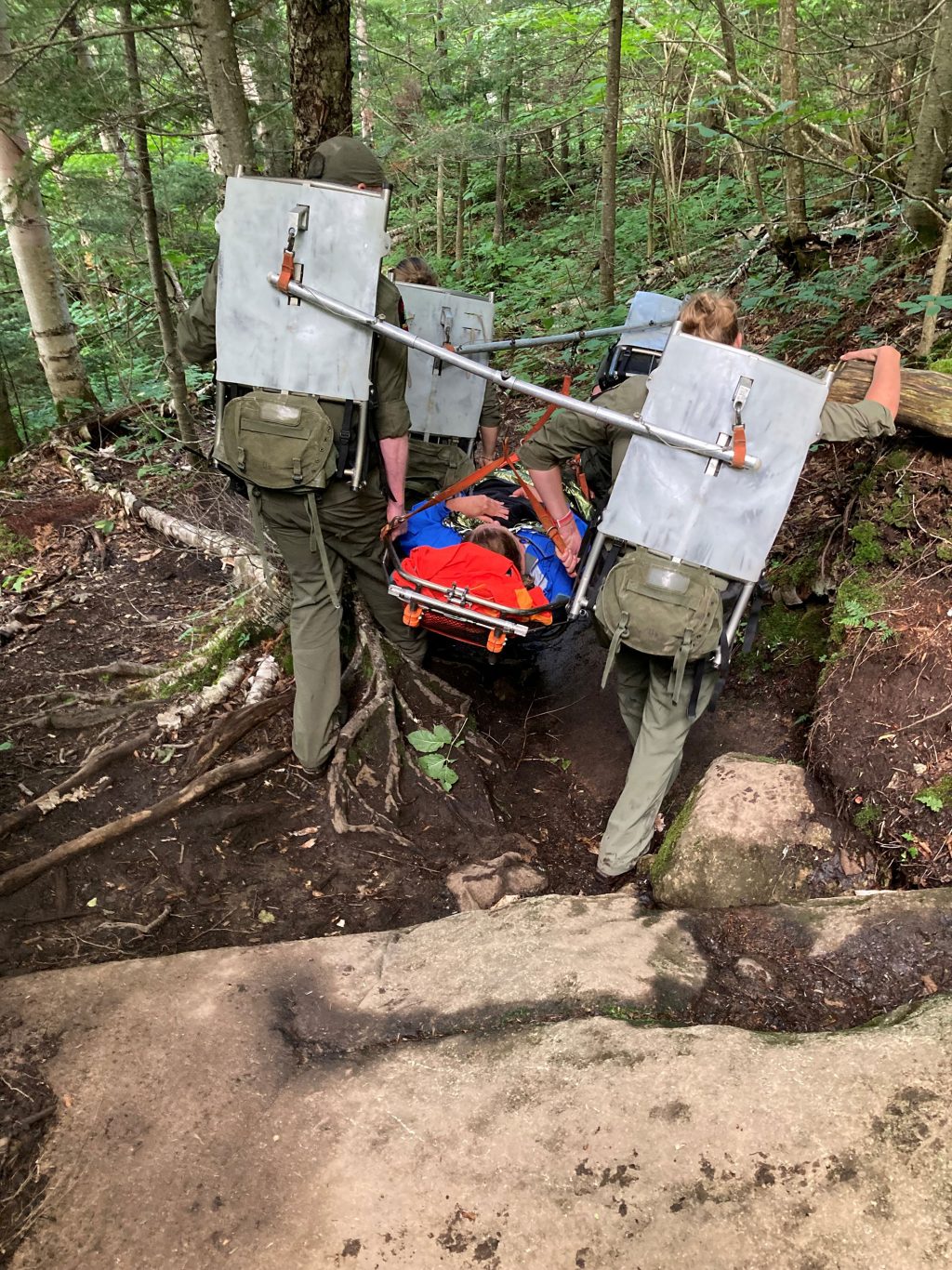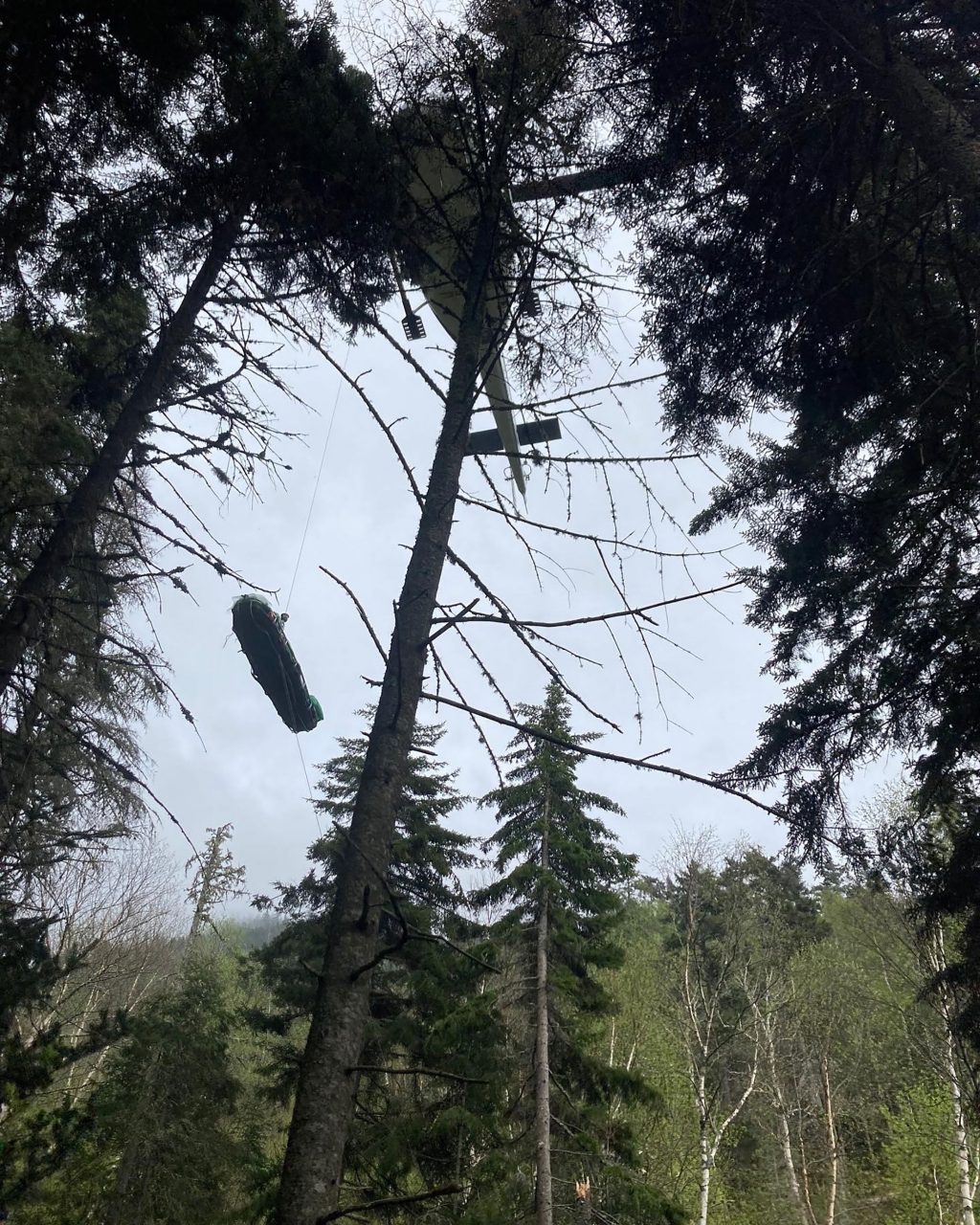What does it mean to have a safe winter hike? For some it could be not slipping on ice or not getting too cold, for others it could mean summiting successfully, or just returning to your car in one piece. For New York State Department of Environmental Conservation Forest Rangers like Scott Sabo, a winter hike “can be successful, within reach, but just has to be realistic.” We spoke with Ranger Sabo about winter hiking safety and emergency preparedness, and why everyone is capable of their own winter adventure.

goEast: How long have you been a Forest Ranger?
RS: I started as a ranger with the National Park Service in 2010. I’ve worked in the big Y parks—Yellowstone and Yosemite—and I did that for three years to give myself the best platform to be a New York State Forest Ranger. So I got on in 2013 and I currently work in Essex County, in the town of Newcomb.
goEast: What areas do you cover in the park?
RS: My ranger district covers about the size of Rocky Mountain National Park. The area goes from the southern High Peaks, near the Lake Colden basin, along the Santanoni Range, out through the Northville-Placid Trail and Long Lake, and south through the Essex Chain. I have a very diverse ranger district: The most remote high peak, Allen, big mountains and rivers, backcountry ponds.
goEast: To what extent is an emergency or accident in the backcountry avoidable?
RS: It’s a very hard thing to quantify. A very small percentage are a result of gross negligence or an extreme level of being unaware. The most experienced eventually succumb to something. If you follow big mountain recreation, a lot of people die. You can be prepared and have a legitimate accident. I would say what we see generally are one or two big mistakes that people start out with or a series of small mistakes or unpreparedness that compound. I can’t really say they’re unavoidable. By definition all accidents are unavoidable if you look at that.
goEast: What are some of the calls Forest Rangers get the most?
RS: Specifically for winter, the two most common calls I can think of offhand are some kind of trauma, whether if it was a slip, trip, fall, or slide. They went X-amount of distance and sustained some kind of lower leg injury and are unable to walk. That can happen with people with full crampons and ice axe.
The next would be literally a medical event because they’re so physically exhausted, physically unable to go any farther. Usually that’s what happens on the summits when you flounder in the krummholz and big wind drift consolidated snow. Couple that with high winds and a whiteout, and they can’t go any farther. There are also tree wells and spruce traps. Those are miserable, demoralizing, exhausting, and if you’ve fallen in one you know how difficult it is to get out. You hope people are hiking with other hikers because that’s the best way to get out.

goEast: Is there a common misconception you see when assisting in these emergencies?
RS: I would say for the most part one of the commonalities is not being prepared to be stationary in the winter. Why it’s more important to talk about winter hiking and winter safety, is the consequence. If I only hike with one headlamp in July and my headlamp dies or fails, I can probably hang out in the woods and not succumb to hypothermia. In the winter, that could be fatal, something that simple as forgetting to change headlamp batteries.
So if I’m not prepared, cannot move any farther, what is my threat to life? It is almost always going to be thermoregulation. People need to have appropriate layers to stay warm, something to insulate them from the ground, whether if it their backpack or some foam, close-celled foam pad like a sit pad. So many people are prepared for the hike, the constant motion, physically and mentally equipped for it, and can hike the summit no problem, and have good foot traction. But most aren’t prepared for, ‘I just slipped five feet and my ankle doesn’t work. I can’t walk.’ If you’re lucky, you’re looking at three hours before the first wave of rangers gets to you.
goEast: You mentioned layers, a sit pad. What else can recreators pack along to be better prepared for these emergencies?
RS: We bring a lot of people around just by providing a hot drink. Having a stove or insulated cup or bottle will go a long ways keeping you warm. It also just helps your mental state. I don’t do several day patrols without a four-season tent either, my shelter is my layers. I can wrap myself with my tarp, sit on my backpack, put puffy pants and belay parka on, with a good pair of gloves. In the East, especially if bushwhacking, bring a shell over your gloves. Our snowpack is so wet and any off-trail travel will leave you thrashing through trees. Now you’re base layer glove is waterproof.
I would absolutely advocate for everyone who is doing serious backcountry recreation, including the High Peaks, to invest in a beacon. It might be your only source to let someone know you’re in trouble. Lastly, ski goggles are a must. The wind is here to defeat you. I’ve watched someone go from being miserable, crawling behind me, to handing them goggles and walking no problem. If you’re above tree line winter goggles are a must, outside the ten essentials.
goEast: Some may not be familiar with DEC backcountry updates, or the High Peaks Information Center. What are other valuable resources recreators can use to be better equipped?
RS: Any absolute, valid source of weather should be your baseline. You hit the big ones, the DEC backcountry conditions and reports page. Any local shops, outfitters guide services. It’s always good to have interpersonal communication. An internet search will get you a huge variety of forums and websites. Benefit of forums being you have a couple hundred people with generally real time trail information. Reaching out to us is an option, but may not be the most viable option. It’s hard for us if we get flooded with inquiries, we’re not sitting in an office, we’re in the woods.
goEast: Mentioning forums earlier, blame is often cast in online forums towards those who end up having an accident on trail. Why should we be avoiding that blame?
RS: People assume others are clueless. I enjoy talking to everyone out recreating on their public land. We talk about ‘uniforming’ people to noncompliance. How many different ways can people uniform themselves and place authority? Meanwhile someone is just trying to do a 6-mile hike and are encountering people asking them if they’re prepared. It’s like my goodness, I just want to hike here. I think we under-appreciate and undervalue the freedom we have here in the Adirondacks. We have huge parcels of land, even with minimal trail structure, you can just bushwhack and make your own route. There’s lots of adventure here and sometimes we get narrow focused on this hike or this mountain.
goEast: Last advice for someone waiting for the next winter hike?
RS: Tailor what you’re going to do based off your physical ability, equipment, and actual, honest assessment of what you can do. A lot of people think equipment will get them farther than their ability, or they’re really stubborn and think their ability will get them farther than equipment. Either way the end result is the same, and that’s them in a bad situation, with the inability to solve a problem. You may be intimidated by prices. But you can have adventures tailored to what you have now, coupled with your ability, and build off of that.

Ethan Gresko
Ethan is a New York State native who enjoys day hikes between the Adirondacks and Hudson Valley, to the Finger Lakes. He loves the written word, is an aspiring 46er, and a firm believer that you have to go down before you go up!
Related Posts
April 2, 2024
10 Tips for Mountain Biking Etiquette During Mud Season
One rough spring could ruin the…




